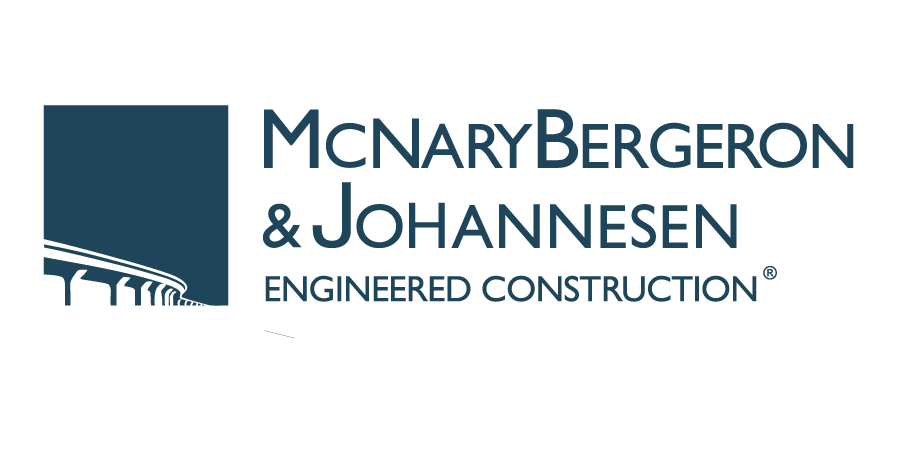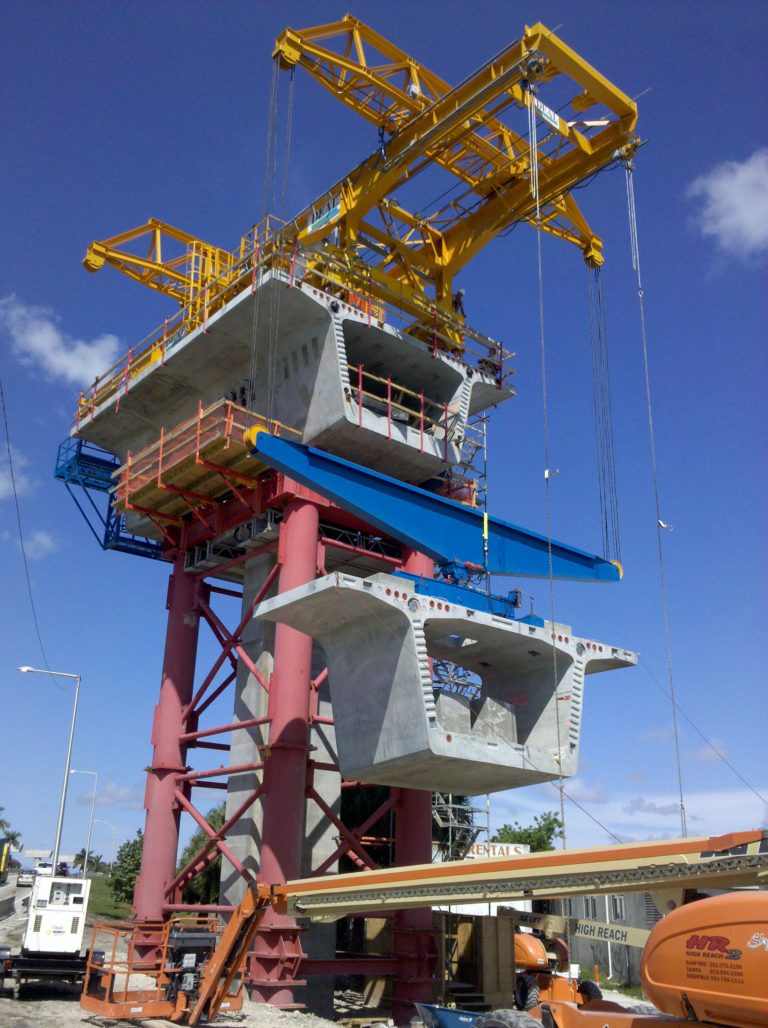In precast concrete segmental balanced cantilever construction, the pier segment is most often produced in a casting yard and erected on bearings and falsework. Alternatively, cast-in-place concrete pier segments have been utilized for longer spans or in areas of high seismicity where a monolithic connection to the column provides a more economical substructure design. Precast concrete pier shells with cast-in-place diaphragms can be proposed as a substitute for cast-in-place pier segments. Pier shells are a hybrid of fully precast and cast-in place construction, and combine their typical advantages and disadvantages.
Advantages
- A monolithic connection is provided between the superstructure and column for incorporating seismic design details. The integral pier column connection also provides overturning stability for the partially erected cantilever.
- Typical segment forms can be used to produce the shell segments in the casting yard. These shells are similar in weight to typical segments.
- The cantilever is a single match-cast unit, so no closure pour is required between the pier segment and first typical segments.
Disadvantages
- Reinforcing details are complex and have small tolerances. Coupled and headed reinforcement is utilized to reduce congestion in the diaphragm.
- Diaphragm concrete and reinforcement are placed in difficult conditions at the top of a column.
- The erection speed falls between that of fully precast piers and cast-in-place concrete construction.
Erection Sequence
With precast pier shells, the fabrication and erection sequence is as follows:
- The pier shell is fabricated in the casting yard using either a unique form or the typical segment form with minor modifications.
- The shell is erected on the column and supported temporarily using falsework. It is positioned for line and grade, and locked into position.
- The diaphragm reinforcing cage is placed in the pier shell. The forms for the diaphragm are secured and the diaphragm cast. Conclusion Pier shells can provide advantages over other methods for precast concrete balanced cantilever bridges, particularly in seismically active areas where an integral pier column connection is required for design.
By, Zach Godsell, a senior bridge engineer with McNary Bergeron & Associates in Denver, Colorado.


